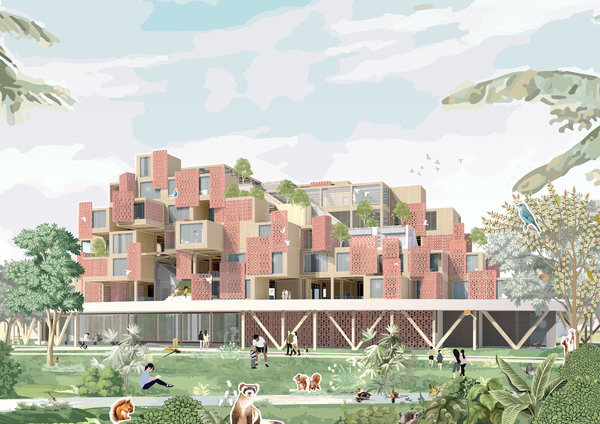Adjustability: From Riverine Ecosystem to Symbiotic Architectural Space
This is a pair work with Taiming Si. The following is the abstract of our project.
Research Question: How can modular design and the use of non-traditional methods in architectural representation enable the establishment of a symbiotic habitat between non-humans and wider human spaces, regarding the current environmental policies and development in Etihad?
With the growing climate and biodiversity crisis, it's time to make a wake-up call to global predatory human development and raise awareness of habitat fragmentation!
In this project, we considered the building as a 'Tree of Habitat'. We attempted to prioritise biodiversity by first creating an ecological 'Green Corridor' with non-humans movement at its core as a 'Tree-trunk' running through the building.
Then, human spaces were connected to the corridor as 'Tree-branches' to form a logical architectural layout. The connecting nodes between the two naturally became transition and interaction spaces between humans and non-humans which lead us to enhance respect for nature, thus enabling a more symbiotic and adjustable home for both humans and non-humans alike!
Combined with the innovative urban strategy and vertical forest concept, this project provided a plausible and developable vision of harmonious coexistence between humans and nature in Etihad.
Meanwhile, based on the modular architectural systems' convenience, expandability, low carbon and sustainability, this project is also a research and exploration of contemporary and future dwelling forms.
We hope this will shed new light for Etihad on breaking the dichotomy between humans and nature (such as severe carbon emissions & habitat fragmentation) and alleviating the housing crisis.


